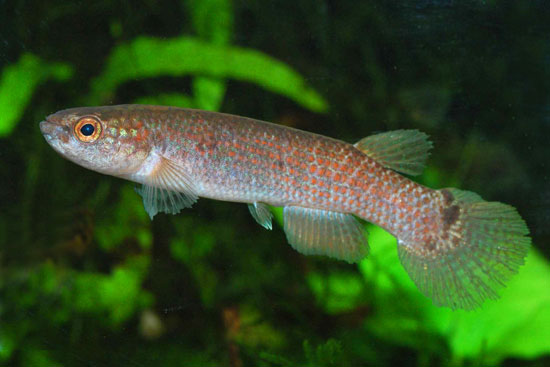| Rivulidae (Rivulines), subfamily: Rivulinae |
| 3.73 cm SL (male/unsexed); 3.2 cm SL (female) |
|
benthopelagic; freshwater |
| South America: Venezuela. |
|
Dorsal soft rays (total): 8-9; Anal soft rays: 13-14. This species is distinguished by the following characters: males with red longitudinal stripes between the rays of the caudal fin, yellow stripe near dorsal and ventral fin margin; females possess brown spots between caudal fin rays; pelvic fins in males moderately long, reaching between 4th and 5th anal fin ray; fin rays, dorsal 8-9, anal 13-14; caudal 30-32; lateral scale rows 39-42 (Ref. 94444). |
| Collected alongside a fast running part of a creek that flows down a boulder-strewn area, with a fall of approximately one in every five meters, a place where people find leisure and can slide down the rocky face. This rocky open area is surrounded by a primary forest. This species lives between tree roots and fallen leaves attached to boulders at the edges of the stream, and between boulders. It was also collected a in places where the water ran slower, but was not found in still water surrounding the rocky waterslide. At the time of collection (September 2006), the water at the collecting site was clear, pH 7, 27.6°C, conductivity was <1 μS/cm. (Ref. 94444). |
|
Not Evaluated (N.E.) Ref. (130435)
|
| harmless |
Source and more info: www.fishbase.org. For personal, classroom, and other internal use only. Not for publication.

